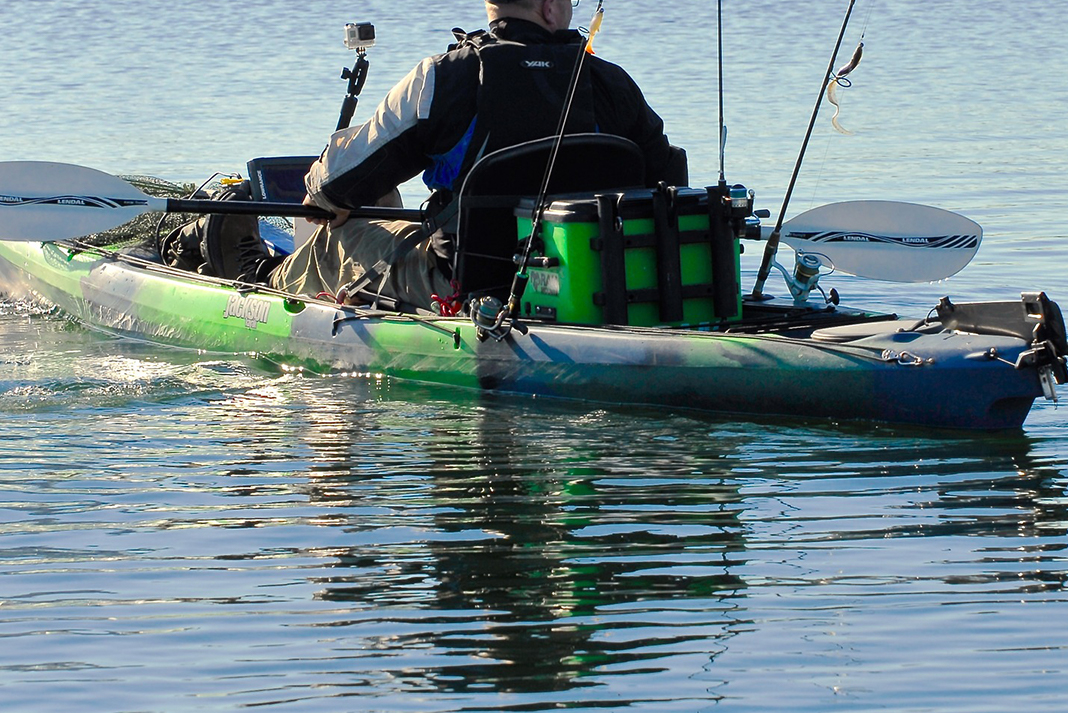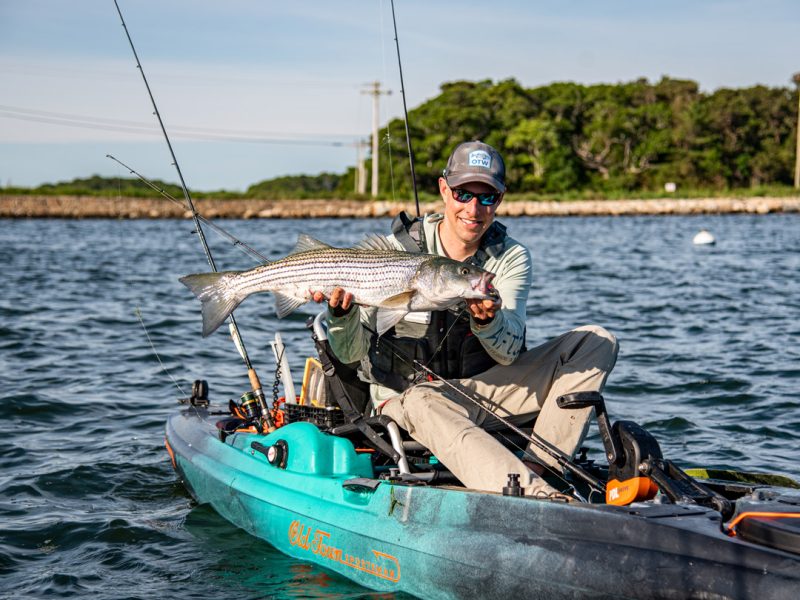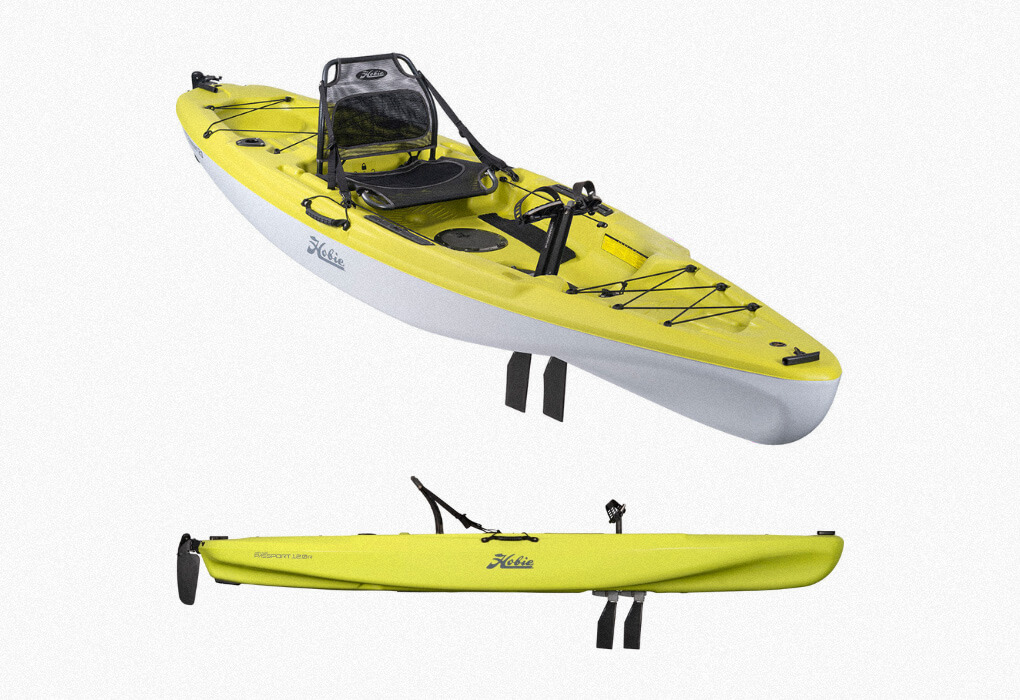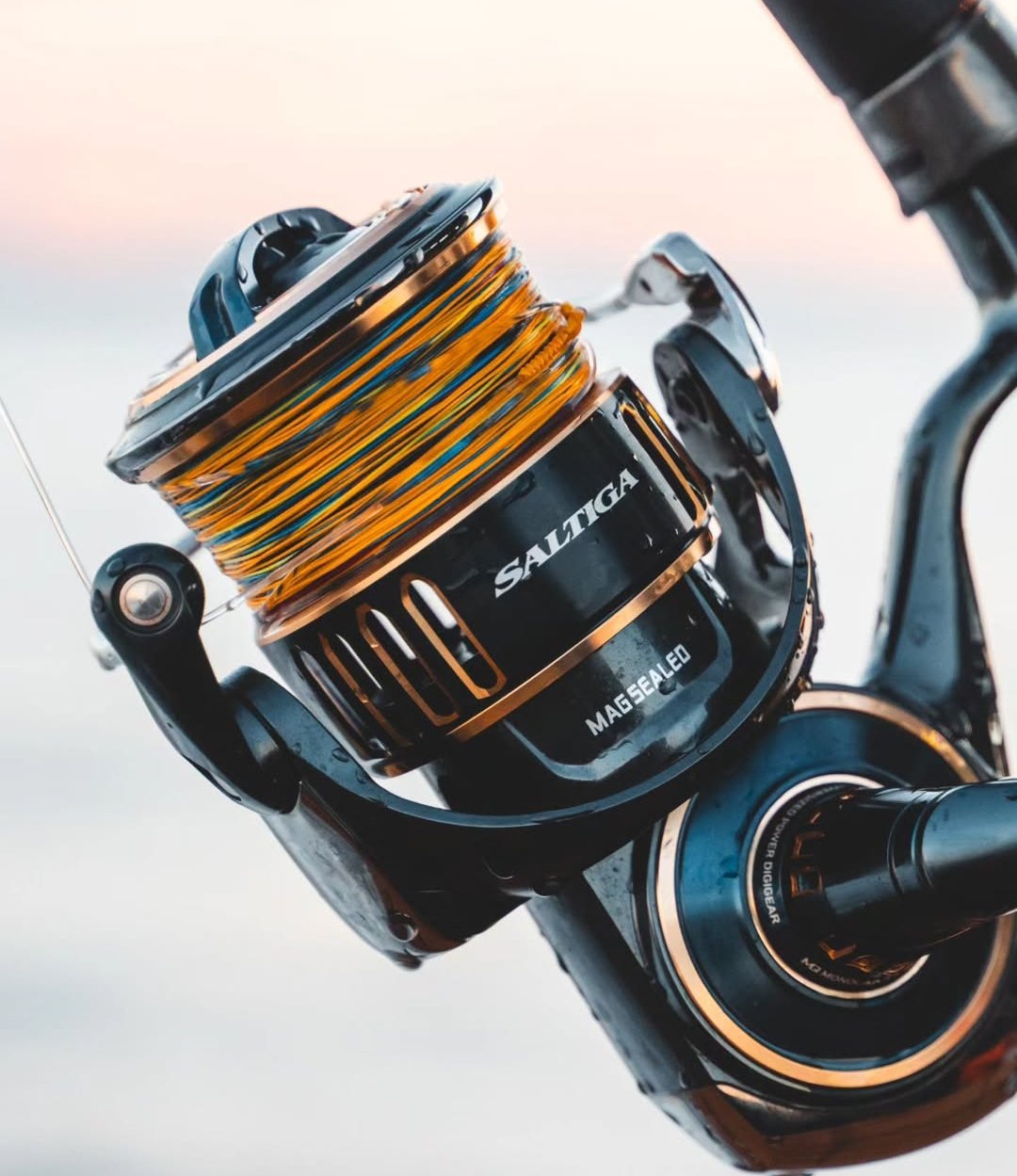Best Beginner Fishing Kayak: Start Catching Fish From Day One
After teaching over 200 beginners to kayak fish, I’ve learned that your first kayak choice can make or break your love for this incredible sport.
Table of Contents
- Introduction
- Why Your First Kayak Choice Matters
- Essential Features Every Beginner Kayak Must Have
- Sit-On-Top vs. Sit-In Kayaks
- Budget Guide
- Top 8 Best Beginner Kayaks
- Best Kayaks by Water Type
- Essential Accessories
- First Month Learning Plan
- Common Beginner Mistakes
- Where to Buy
- Maintenance & Care
- Kayak Selection Quiz
- FAQ
After teaching over 200 beginners to kayak fish, I’ve learned that your first kayak choice can make or break your love for this incredible sport. Too many new anglers get overwhelmed by the countless options, end up with the wrong kayak, and either struggle with safety issues or abandon the sport entirely within their first season.
The problem isn’t lack of options – it’s choice paralysis. Walk into any kayak shop and you’ll see dozens of models, each claiming to be “perfect for beginners.” But here’s what most retailers won’t tell you: the best fishing kayak for a beginner isn’t about the most features or the lowest price – it’s about building confidence on the water while keeping you safe.
This guide cuts through the marketing noise with a clear selection framework based on stability, ease of use, and learning curve optimization. We’ll cover everything from essential features to budget planning, helping you choose a kayak that accelerates your learning rather than creating frustration.
My Authority on This Topic
Over five years of teaching kayak fishing, I’ve guided complete beginners through their first experiences and watched what works – and what doesn’t. The recommendations in this guide are based on real-world results, not marketing claims.
Why Your First Fishing Kayak Choice Matters More Than You Think
Your first kayak isn’t just a purchase – it’s the foundation of your entire kayak fishing journey. Choose wrong, and you’ll spend more time fighting your equipment than enjoying the water. Choose right, and you’ll build confidence quickly while staying safe and comfortable.
The Hidden Costs of Choosing Wrong
Common Beginner Mistakes
- • Buying ultra-wide “stable” kayaks that are impossible to paddle efficiently
- • Choosing cheap kayaks that track poorly and create frustration
- • Ignoring comfort features, leading to back pain and short trips
- • Buying kayaks too heavy to transport solo
- • Selecting inappropriate kayaks for local water conditions
Real Consequences
- • 40% of beginners quit within 6 months due to poor kayak choice
- • Average $800 lost on “upgrade” purchases within first year
- • Higher injury rates from unstable or uncomfortable kayaks
- • Reduced fishing success due to kayak limitations
- • Family members who refuse to try kayak fishing again
Safety First: Why Stability Beats Speed for Beginners
Every year, I see beginners who bought “performance” kayaks because they looked cool or were on sale. These narrow, fast kayaks might work great for experienced paddlers, but they’re disasters for beginners. Primary stability – how steady a kayak feels when you first sit in it – is crucial for building confidence.
The Stability Sweet Spot
For beginners, look for kayaks between 32-36 inches wide. This provides excellent stability without being so wide that paddling becomes exhausting. You can always upgrade to a narrower, faster kayak later.
Long-Term Skill Development Implications
A good beginner kayak doesn’t just keep you safe – it teaches you proper techniques. Kayaks with good hull design help you learn efficient paddling strokes, while comfortable seating teaches proper posture. These fundamentals carry forward to any kayak you’ll paddle in the future.
The right first kayak also gives you time to discover your preferences. Do you prefer lakes or rivers? Are you more interested in fishing or exploring? A versatile beginner kayak lets you experiment without committing to a specific style too early.
Essential Features Every Beginner Fishing Kayak Must Have
Stability
Wide, stable hull design for confidence building
Comfort
Adjustable seating for all-day fishing sessions
Safety
Self-rescue capabilities and safety features
Primary Stability vs. Secondary Stability Explained
Primary Stability
How stable the kayak feels when sitting upright. This is what beginners need most.
- • Wide, flat hull sections
- • Immediate confidence boost
- • Best for learning basic techniques
- • Ideal for calm water fishing
Secondary Stability
How stable the kayak is when tilted on its side. Important for rough water.
- • Curved hull sections
- • Better for experienced paddlers
- • Useful in waves and current
- • Develops over time with skill
Comfort Features That Matter for Long Learning Sessions
Seating System
- • High-back support for proper posture
- • Adjustable positioning for different body types
- • Breathable materials to prevent sweating
- • Easy in/out access for breaks
Foot Support
- • Adjustable foot pegs or molded footwells
- • Proper knee support for stability
- • Non-slip surfaces for security
- • Accommodation for different leg lengths
Safety Features You Can’t Compromise On
Non-Negotiable Safety Features
- • Multiple grab handles for rescue situations
- • Self-bailing scupper holes (sit-on-top models)
- • Stable platform for easy re-entry
- • Reflective elements for visibility
- • Adequate buoyancy for flotation
- • Smooth edges to prevent injury
- • Secure storage to prevent gear loss
- • Compatible with standard safety equipment
Sit-On-Top vs. Sit-In: Which is Better for Beginners?

Sit-On-Top Advantages
- • Easier entry/exit – No climbing into cockpit
- • Self-bailing – Water drains through scupper holes
- • Less claustrophobic – Open feeling for nervous beginners
- • Better for fishing – More space for gear and movement
- • Safer for beginners – Easier to get back on after falling off
- • Year-round use – Better for warm weather fishing
Sit-Inside Advantages
- • Better speed – Lower profile cuts through water
- • Weather protection – Keeps legs dry and warm
- • More efficient paddling – Better body connection
- • Lighter weight – Generally easier to transport
- • Better tracking – Longer waterline for straight travel
- • Lower cost – Usually less expensive
The Beginner’s Safety Advantage of Sit-On-Tops
For beginners, sit-on-top kayaks are overwhelmingly the better choice. Here’s why: when you inevitably fall off (and you will), getting back on a sit-on-top is much easier than performing a wet exit and re-entry with a sit-inside kayak.
Self-Rescue Reality Check
I’ve taught hundreds of beginners, and I can count on one hand the number who could successfully perform a wet re-entry on their first try. With a sit-on-top, you simply climb back on from the side – no special techniques required.
When Sit-In Kayaks Make Sense for New Anglers
Sit-inside kayaks can work for beginners in specific situations:
- • Cold weather fishing – When water and air temperatures are low
- • Long-distance paddling – When you need maximum efficiency
- • Calm, protected waters – When re-entry risks are minimal
- • Budget constraints – When cost is the primary factor
- • Strong swimming ability – When you’re very comfortable in water
However, even in these situations, most beginners will be happier and safer starting with a sit-on-top design. You can always try a sit-inside kayak later once you’ve built confidence and skills.
Budget Guide: How Much Should You Spend on Your First Fishing Kayak?
Budget Calculator
Total Investment
Entry-Level Budget: Under $500 Options That Actually Work
Lifetime Hydros Angler
The best budget option that doesn’t sacrifice safety or basic functionality.
- • 10’1″ length for decent tracking
- • 32″ wide for stability
- • Built-in rod holders
- • Paddle included
- • 275 lb capacity
Pelican Sentinel 100X
Lightweight and stable, perfect for new anglers on a tight budget.
- • 10′ length, easy to handle
- • 30″ wide for maneuverability
- • Only 36 lbs – easy transport
- • Adjustable footrests
- • 275 lb capacity
Best Value Range: $500-$800 Sweet Spot
This price range offers the best balance of features, quality, and performance for beginners. You’ll get kayaks that will serve you well for years without breaking the bank.
Old Town Malibu 9.5
Our top pick for beginners – stable, comfortable, and feature-rich.
- • 9’5″ length for easy handling
- • 33″ wide for excellent stability
- • Multiple rod holders
- • Storage compartments
- • 325 lb capacity
Vibe Yellowfin 100
Great stability and fishing features at a reasonable price.
- • 10′ length for good tracking
- • 34″ wide for stability
- • Hero seat system
- • Gear tracks included
- • 375 lb capacity
When to Invest More: Premium Features Worth the Cost
Spending $800-$1,200 on your first kayak makes sense if you’re serious about the sport and want features that will grow with your skills.
Premium Features Worth Paying For
- • Pedal drives – Hands-free propulsion for serious fishing
- • Standing platforms – Stable enough for stand-up fishing
- • Premium seating – All-day comfort for long trips
- • Integrated rod holders – Multiple positions for different techniques
- • Gear track systems – Customize your setup as you learn
- • Larger storage – Room for overnight gear
Find Your Perfect Beginner Fishing Kayak
Loading quiz…
Your Recommended Kayak
Top 8 Best Beginner Fishing Kayaks for 2025

Old Town Malibu 9.5
The perfect first fishing kayak that balances stability, comfort, and features without overwhelming beginners.
Pros
- • Incredibly stable design
- • Comfortable seating system
- • Multiple storage options
- • Easy to paddle and maneuver
- • Excellent build quality
Cons
- • Moderate price point
- • May be too stable for some
- • Limited speed capability

Lifetime Hydros Angler
The best budget option that doesn’t sacrifice safety or basic functionality for new anglers.
Pros
- • Excellent value for money
- • Good stability for beginners
- • Paddle included
- • Built-in rod holders
- • Lightweight at 52 lbs
Cons
- • Basic seat comfort
- • Limited storage space
- • No premium features

Vibe Yellowfin 100
Outstanding stability and fishing features at a reasonable price point for serious beginners.
Pros
- • Excellent stability for standing
- • Hero seat system comfort
- • Gear tracks for customization
- • Large storage capacity
- • Great build quality
Cons
- • Heavier than some options
- • Wide design affects speed
- • Higher price point

Pelican Sentinel 100X
Lightweight and stable option perfect for nervous beginners or those with transport limitations.
Pros
- • Only 36 lbs – easy transport
- • Very stable design
- • Affordable price point
- • Good for smaller paddlers
- • Adjustable footrests
Cons
- • Limited weight capacity
- • Basic features only
- • Shorter length affects tracking
Best Beginner Fishing Kayaks by Water Type
Lake and Pond Fishing
Maximum Stability Options
- • Old Town Malibu 9.5
- • Vibe Yellowfin 100
- • Lifetime Hydros Angler
Perfect for calm water fishing where stability matters most.
River and Stream
Maneuverable Yet Stable
- • Pelican Sentinel 100X
- • Perception Swifty Deluxe
- • Feelfree Lure 11.5
Shorter, more maneuverable designs for moving water.
Saltwater Beginners
Corrosion-Resistant
- • Bonafide SS127
- • Native Ultimate FX 12
- • Hobie Mirage Passport
Longer, more stable designs for protected saltwater.
Essential Accessories for Your First Fishing Kayak
Safety First: Non-Negotiable
- • PFD (Personal Flotation Device) – $50-100
- • Paddle (+ spare) – $80-150
- • Whistle – $5-10
- • Bilge pump – $15-25
- • Dry bag for essentials – $20-40
Fishing Essentials
- • Rod holders – $30-60
- • Tackle storage – $25-50
- • Anchor system – $40-80
- • Fish finder (optional) – $100-300
- • Landing net – $20-40
Comfort & Convenience
- • Kayak cart – $60-120
- • Seat cushion upgrade – $40-80
- • Cup holder – $15-25
- • Kayak cover – $50-100
- • Car top carrier – $100-200
Your First Month: A Beginner’s Learning Plan
Week 1-2: Mastering Your Kayak Before Adding Fishing
Skills to Practice
- • Basic paddling strokes
- • Turning and maneuvering
- • Getting in and out safely
- • Adjusting seat and footrests
- • Basic safety procedures
Goals for Week 1-2
- • Paddle 30 minutes without fatigue
- • Turn in both directions confidently
- • Enter/exit without help
- • Practice wet exit (if applicable)
Week 3-4: Integrating Fishing Techniques Safely
New Skills to Add
- • Casting while seated
- • Rod management techniques
- • Basic anchoring
- • Fish handling from kayak
- • Gear organization
Goals for Week 3-4
- • Catch your first fish from kayak
- • Paddle to specific fishing spots
- • Stay positioned over structure
- • Handle gear without tipping
Month 2 and Beyond: Advancing Your Skills
Advanced Techniques
- • Standing and fishing (if stable enough)
- • Trolling techniques
- • Multi-rod setups
- • Weather reading
- • Navigation skills
Progression Goals
- • Fish in different water types
- • Plan multi-hour trips
- • Start targeting specific species
- • Consider kayak modifications
Common Beginner Mistakes and How to Avoid Them
Kayak Selection Mistakes That Cost You Safety and Enjoyment
Common Mistakes
- • Buying the cheapest kayak available
- • Choosing based on looks alone
- • Ignoring weight capacity limits
- • Buying without trying (when possible)
- • Not considering transport needs
How to Avoid
- • Research reputable brands
- • Focus on stability and comfort
- • Calculate total weight needs
- • Test paddle before buying
- • Measure your vehicle’s capacity
Safety Oversights That Put Beginners at Risk
Dangerous Oversights
- • Skipping the PFD “just this once”
- • Not telling anyone where you’re going
- • Paddling in weather beyond skill level
- • Forgetting backup paddle
- • Not checking weather conditions
Safety Solutions
- • Always wear your PFD
- • Leave float plan with someone
- • Start in calm, protected waters
- • Carry backup paddle and whistle
- • Check weather before every trip
Fishing Technique Errors That Kill Your Success
Common Errors
- • Bringing too much gear
- • Not managing rod properly
- • Forgetting to anchor
- • Casting without looking
- • Not preparing for fish handling
Better Approaches
- • Start with minimal, organized gear
- • Practice rod management on land
- • Learn basic anchoring techniques
- • Always check surroundings before casting
- • Bring proper fish handling tools
Where to Buy Your First Fishing Kayak
Online vs. In-Store: Pros and Cons
Online Advantages
- • Better prices and selection
- • Easy comparison shopping
- • Customer reviews available
- • Often free shipping
In-Store Advantages
- • Can test before buying
- • Expert advice available
- • No shipping damage risk
- • Immediate gratification
Timing Your Purchase: When to Buy
Best Times to Buy
- • Fall/Winter – End of season sales
- • Black Friday – Major retailer discounts
- • January – New year clearance
- • Model year changes – Previous year discounts
Avoid These Times
- • Spring (March-May) – Peak demand
- • Summer holidays – Limited inventory
- • Right before fishing season
Recommended Retailers
Online Retailers
- • Amazon – Wide selection, fast shipping
- • REI – Expert advice, good return policy
- • Dick’s Sporting Goods – Competitive prices
- • Walmart – Budget-friendly options
Specialty Stores
- • Local kayak shops – Expert advice
- • Outdoor specialty stores – Quality focus
- • Boat dealers – Full service options
- • Fishing tackle shops – Fishing-focused
Used Options
- • Facebook Marketplace – Local deals
- • Craigslist – Bargain hunting
- • eBay – Wider selection
- • Kayak forums – Enthusiast sales
Maintenance and Care: Keeping Your Investment Safe
After Every Trip: Essential Cleaning
- 1. Rinse with fresh water – Remove salt, sand, and debris
- 2. Check for damage – Look for cracks, scratches, or loose parts
- 3. Dry thoroughly – Prevent mold and mildew growth
- 4. Clean gear tracks – Remove debris from rails and fittings
- 5. Store properly – Keep out of direct sunlight
Seasonal Care: Preparing for Storage
Winter Storage
- • Clean and dry completely
- • Store in cool, dry place
- • Support hull properly
- • Remove or loosen bungee cords
- • Check for UV damage
Spring Preparation
- • Inspect all fittings and hardware
- • Check seat and backrest
- • Test all moving parts
- • Replace worn bungee cords
- • Apply UV protectant
Frequently Asked Questions
The Old Town Malibu 9.5 is our top pick for complete beginners. It offers excellent stability, comfort, and safety features at a reasonable price point. The wide, stable design builds confidence while the quality construction ensures years of reliable use.
For a complete beginner setup including kayak, paddle, PFD, and basic accessories, expect to spend $600-$1,200. Budget options start around $500 total, while premium beginner setups can reach $1,500. Remember that quality gear keeps you safer and more comfortable.
Yes, sit-on-top kayaks are overwhelmingly better for beginners. They’re easier to get in and out of, self-bailing, and much safer for new paddlers. The open design is less intimidating and allows for easier re-entry if you fall off. Most importantly, they’re more stable and forgiving of beginner mistakes.
For beginners, look for kayaks between 9.5-12 feet long and 32-36 inches wide. This size range provides good stability without being too difficult to paddle or transport. Shorter kayaks are more maneuverable but may track poorly, while longer kayaks are faster but harder to turn.
Pedal kayaks aren’t necessary for beginners, but they can be helpful for serious fishing. They free up your hands for fishing and are easier to position precisely. However, they’re more expensive and heavier. Start with a paddle kayak unless you’re certain you’ll be doing a lot of fishing and have the budget for the upgrade.
Essential safety equipment includes: a properly fitted PFD (personal flotation device), a whistle, a backup paddle, and a bilge pump or sponge. For longer trips, add a dry bag with emergency supplies, a first aid kit, and a means of communication. Never compromise on safety equipment – it’s literally lifesaving.
Conclusion: Your Journey to Kayak Fishing Success
Choosing your first fishing kayak is one of the most important decisions you’ll make in your kayak fishing journey. The right kayak builds confidence, keeps you safe, and opens up a lifetime of incredible fishing opportunities. The wrong kayak can end your interest in the sport before it truly begins.
Ideal Beginner Profile
- • Prioritizes stability and safety over speed
- • Wants to build confidence gradually
- • Values comfort for longer learning sessions
- • Prefers sit-on-top design for ease of use
- • Focuses on calm water fishing initially
Long-Term Value Assessment
- • A quality beginner kayak serves you for years
- • Resale value remains strong with proper care
- • Skills learned transfer to any future kayak
- • Investment in safety pays dividends forever
- • Right choice leads to lifetime of enjoyment
Next Steps for Potential Buyers
- 1. Take our kayak selection quiz above to get personalized recommendations
- 2. Visit a local dealer to test paddle your top choices if possible
- 3. Start with essential safety gear – never compromise on PFD and paddle quality
- 4. Plan your first month using our learning progression guide
- 5. Connect with local kayak fishing groups for mentorship and tips
Remember: the best fishing kayak is the one that gets you safely on the water and keeps you coming back for more adventures.

